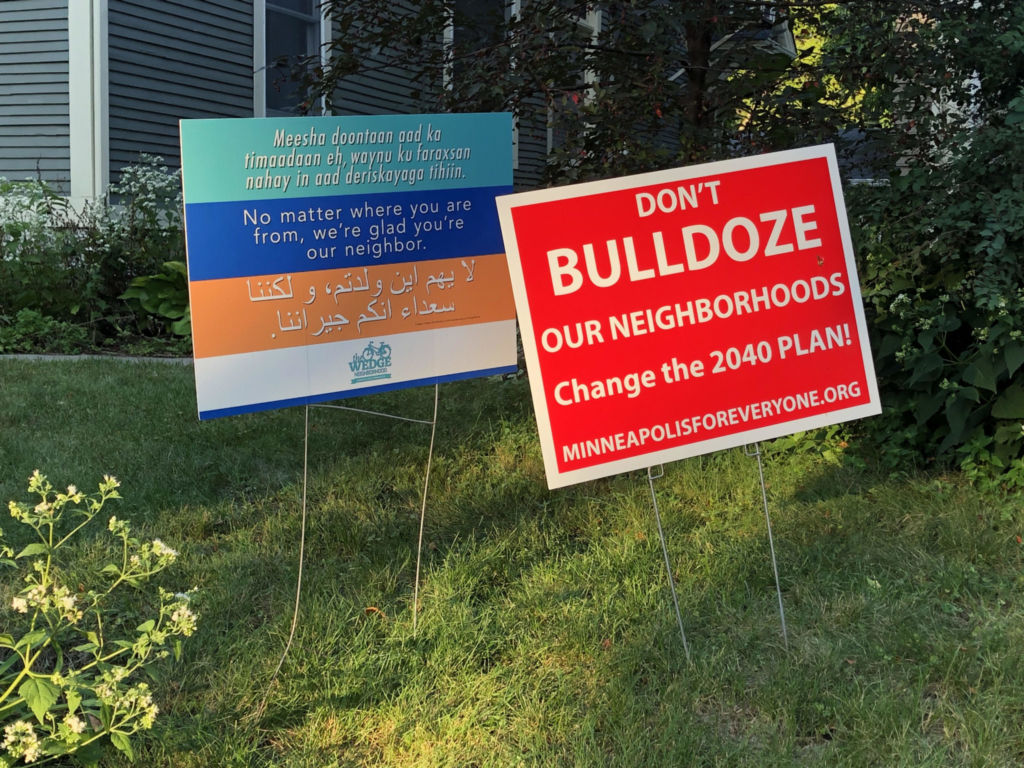Minneapolis City Planners: You Must Drive 37 Percent Less
Could you please pick your kids up from school 40 percent fewer times? Could you please take 40 percent fewer trips to the doctor’s office or the grocery store? This is exactly what City Planners in Minneapolis are advocating as part of their 2040 plan to cut carbon dioxide emissions by 80 percent by 2050.
The Star Tribune report on the 2040 Plan put it this way:
The city of Minneapolis wants you to stop driving to the grocery store.
These kinds of routine errands account for an outsized percentage of driving trips, city planners say, contributing in a big way to Minneapolis’s struggle to reduce its environmental footprint.
“What we’re saying is, what 37 percent of trips could you eliminate from your life?” said Paul Mogush, city planning manager. “And what would it take to help you get there?”
The city’s answer includes bringing more goods and services closer to where people already live, such as allowing for more commercial businesses in highly populated areas. In other words: “Put the stuff closer together so it’s easier to get to the stuff,” said Mogush.
Considering many members of my neighborhood in Uptown are already upset about a proposal to allow fourplexes to be built in residential neighborhoods, I can only imagine how they will howl at the prospect of having a Nicollet K-Mart situation situation.

The Strib continues:
Nationwide, shopping and errands make up about 45 percent of driving trips, according to the U.S. Department of Transportation. Using this baseline, city planners are paying extra attention to this subset of trips in order to cut transportation emissions, including raising awareness about how this behavior hurts the environment.
Changing zoning laws may allow more commercial buildings to be built in traditionally residential areas, but that is no guarantee people will actually change their driving habits.
Right now, 90 percent of trips in Minneapolis are taken by car, according to city data.
“I live six blocks from a Target,” said Heather Worthington, director of long-range planning for Minneapolis. “It would be very easy for me to walk to Target. I rarely do.”
This is exactly the type of smug bureaucratic attitude that makes my blood boil. City planners are no longer looking for common-sense, practical ways to improve the lives of the people they serve.
Instead, they are trying to force everyone else to do as they say, but not as they do.
Walking six blocks may not necessarily be difficult for a young, able-bodied person on a warm sunny afternoon in September, but this would be a major pain in the you-know-where if people carrying groceries or other goods you just bought at a store. Especially if you happen to be elderly, or physically disabled.
Also, we live in Minnesota. Who wants to walk six blocks to the store when it is -6 F for a high in January? Not I.
Besides, walking to the grocery store is going to take longer than driving a car because walking with groceries is a lot more difficult than loading up the trunk of your car with groceries and heading home. This means more trips walking back and forth to the store carrying fewer items on each trip. This represents a huge opportunity cost for people who would rather spend their time doing other things, like reading to their kids.
Finally, the amount of potential global warming that would be averted from this plan is so small it is impossible to even measure. I know this because even the Clean Power Plan, which was considered to be the Obama Administrations most ambitious climate change regulation, would have only averted about .018 degrees C of future warming by 2100, an amount too small to be measured.
Therefore, the greenhouse gas emissions averted by the 2040 plan are even more trivial by comparison. That makes the 2040 plant to reduce driving trips 37 percent all pain and no gain.